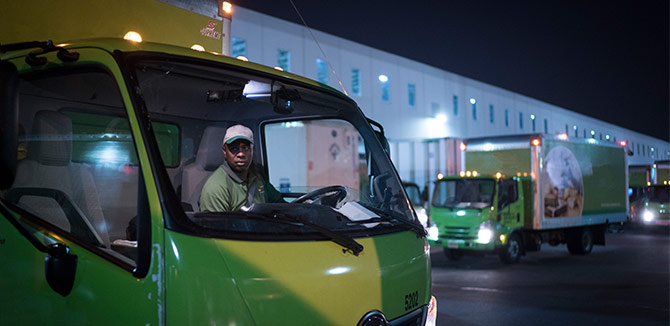What if you could be in two places at once?
Safety and compliance managers often struggle to balance taking care of things at the office and getting a better understanding of what’s happening in the field. Spending time in the field can mean less time in the office, and vice versa.
But advances in video telematics have created an opportunity for “virtual ride-alongs,” a potential solution that allows managers to do more of both.
“A virtual ride-along is the ability for you to tap into the video telematics inside your vehicles as they operate in the field,” said Kim Masterson, senior product marketing manager for Lytx. “Basically, it lets you live stream video of the exterior or outside view from vehicles that have connected cameras. You can also go back and pull up custom clips on demand so you and the driver can go through a virtual replay of the ride at another time. We’ve seen people come up with some interesting use cases for virtual ride-alongs.”
Here are five real-world examples of how fleets can use virtual ride-alongs to their advantage.
Bolster “800-how’s my driving” programs
Many companies put placards on the backs of their vehicles, inviting other drivers to call in with comments to a toll-free number. Service and safety managers can cross-reference the comment with video telematics data, pulling up recorded footage around the vehicle for the time associated with the call.
Increase compliance with safety procedures
Safety often involves more than just driving performance. A virtual ride-along lets managers live stream or spot check video of the exterior or outside view of the vehicle from the field so they can ensure other safety procedures are being followed, such as whether workers are wearing vests, hard hats, protective goggles and other required gear.
Spot check work site
If fleets set cameras to continue recording after a vehicle has arrived at a work site and its engine has been turned off, managers can perform a virtual site check to get a quick idea of what’s happening around the vehicle at the location. This can be especially useful for those managing construction projects.
Provide proof of service
To confirm service at specific addresses, waste companies can use video telematics to prove that they met their service obligations. For residential service, video telematics also can show whether customers had left out their bins in time. Every time a waste company has to send out a vehicle for an alleged missed pick up, it costs time and money.
Troubleshoot in the field
Sometimes, a picture is worth a thousand words. Drivers can more easily convey difficulties they encounter by sharing what they’re seeing with supervisors or dispatchers, whether it’s a locked gate or a blocked delivery dock. Managers then can leverage resources back at headquarters to help troubleshoot the problem and get their drivers back on track and on schedule.
And fleets don’t need multiple cameras on their vehicles to bring all of these examples to life, Masterson noted: “Most of these examples can be accomplished with just the forward-facing camera.”
